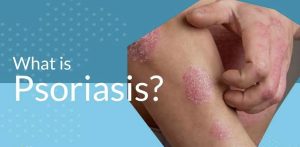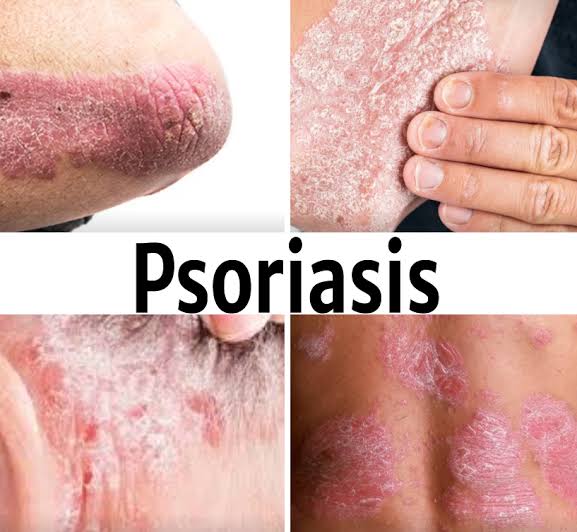As I gazed in the mirror, the scales of strength stared back at me – a battlefield of red, flaky skin that seemed to pulse with a life of its own. Psoriasis, the unwelcome companion I’d lived with for years, taunting me with its unpredictability. Yet, in that moment, something shifted. I saw not just a canvas of discomfort, but a testament to my resilience. Every flare-up, every sleepless night, every whispered “you’re not alone” from a fellow warrior – all had forged an unyielding spirit within me.
With each passing day, I began to reclaim my narrative. I discovered hidden strengths in the depths of my struggles, like a master chef uncovering secret ingredients. I learned to navigate the ebbs and flows of my condition, to listen to my body’s whispers, and to wield the power of self-care like a shield. And as I emerged from the shadows, I found myself craving more – more knowledge, more connection, more triumphs. The scales of strength, once a symbol of limitation, now shimmered with promise, beckoning me toward a brighter, bolder tomorrow.
In this journey, I’ve savored the sweetness of hope – a flavor that lingers long after the darkness fades. I’ve tasted the richness of community, where shared struggles give rise to unbreakable bonds. And I’ve indulged in the feast of self-discovery, where every challenge reveals a new facet of my unyielding spirit. The scales of strength, once a source of shame, now shine like a badge of honor – a reminder that I am unbreakable, that I am enough, and that every day holds the promise of a more vibrant, more resilient me.
What is Psoriasis?

Psoriasis is a chronic autoimmune skin condition characterized by:
1. Red, scaly patches: Thick, red skin with silvery scales, often on the elbows, knees, scalp, and lower back.
2. Inflammation: Skin cells multiply too quickly, causing inflammation and thickening of the skin.
3. Immune system dysfunction: The immune system mistakenly attacks healthy skin cells, leading to the condition.
4. Genetic predisposition: Family history and genetic factors contribute to the development of psoriasis.
5. Triggers: Stress, cold weather, infections, and certain medications can trigger or worsen psoriasis.
6. Variations: Different types of psoriasis exist, including plaque, guttate, inverse, pustular, and erythrodermic psoriasis.
7. Associated conditions: Psoriasis is linked to other health issues, such as arthritis, diabetes, and heart disease.
8. No cure: Currently, no cure exists, but treatments can manage symptoms and improve quality of life.
Psoriasis affects approximately 2-3% of the global population, and its physical and emotional impact can be significant. However, with proper treatment and support, individuals with psoriasis can lead active and fulfilling lives.
Causes
Genetic Factors:
– Family history: Having a first-degree relative with psoriasis increases the risk.
– Genetic mutations: Certain genetic variations can predispose individuals to psoriasis.
Immune System:
– Autoimmune response: The immune system mistakenly attacks healthy skin cells.
– T-cell dysfunction: Abnormal T-cell activity contributes to inflammation and skin cell proliferation.
Environmental Triggers:
– Stress: Physical or emotional stress can trigger psoriasis flare-ups.
– Infections: Certain infections, such as strep throat, can trigger guttate psoriasis.
– Injuries: Skin injuries, such as cuts or burns, can trigger psoriasis in some individuals.
– Cold weather: Cold temperatures and low humidity can exacerbate psoriasis.
– Smoking: Smoking can increase the risk of developing psoriasis and worsen symptoms.
– Alcohol consumption: Excessive alcohol consumption can trigger psoriasis flare-ups.
Other Factors:
– Hormonal changes: Hormonal fluctuations during pregnancy or menopause can affect psoriasis.
– Medications: Certain medications, such as beta-blockers, lithium, and malaria drugs, can trigger psoriasis.
– Vitamin deficiencies: Deficiencies in vitamins A, C, and D may contribute to psoriasis.
Lifestyle Factors:
– Obesity: Being overweight or obese can increase the risk of developing psoriasis.
– Sedentary lifestyle: Lack of physical activity can contribute to psoriasis development.
– Poor diet: A diet high in processed foods and low in fruits, vegetables, and whole grains may worsen psoriasis symptoms.
Keep in mind that psoriasis is a complex condition, and individual factors may vary. Understanding personal triggers and risk factors can help manage symptoms and develop effective treatment plans.
Types
1. Plaque Psoriasis: Most common form, characterized by raised, red patches covered with silvery scales.
2. Guttate Psoriasis: Small, pink spots appear on the skin, often triggered by strep throat or other infections.
3. Inverse Psoriasis: Smooth, red patches in skin folds (e.g., armpits, groin, under breasts).
4. Pustular Psoriasis: Small, pus-filled bumps on the hands and feet or widespread on the body.
5. Erythrodermic Psoriasis: Severe, widespread redness and scaling, potentially life-threatening.
6. Psoriatic Arthritis: Joint pain and inflammation, often accompanied by skin symptoms.
7. Nail Psoriasis: Changes in nail color, texture, or shapeThere are several types of psoriasis, including:
1. Plaque Psoriasis: Most common form, characterized by raised, red patches covered with silvery scales.
2. Guttate Psoriasis: Small, pink spots appear on the skin, often triggered by strep throat or other infections.
3. Inverse Psoriasis: Smooth, red patches in skin folds (e.g., armpits, groin, under breasts).
4. Pustular Psoriasis: Small, pus-filled bumps on the hands and feet or widespread on the body.
5. Erythrodermic Psoriasis: Severe, widespread redness and scaling, potentially life-threatening.
6. Psoriatic Arthritis: Joint pain and inflammation, often accompanied by skin symptoms.
7. Nail Psoriasis: Changes in nail color, texture, or shape, such as pitting, thickening, or separation from the nail bed.
8. Scalp Psoriasis: Redness, scaling, and flaking on the scalp, potentially extending to the forehead, ears, or neck.
9. Palmar-Plantar Psoriasis: Thickening and scaling on the palms and soles.
10. Acrodermatitis Continua: Pustular psoriasis on the tips of fingers or toes.
Risk Factors
1. Family History: Having a first-degree relative with psoriasis increases the risk.
2. Genetic Predisposition: Certain genetic mutations, such as HLA-Cw6, can increase the risk.
3. Age: Psoriasis can occur at any age, but it typically starts between 15 and 35 years old.
4. Obesity: Being overweight or obese increases the risk of developing psoriasis.
5. Smoking: Smoking can increase the risk of developing psoriasis and worsen symptoms.
6. Stress: Physical or emotional stress can trigger psoriasis flare-ups.
7. Infections: Certain infections, such as strep throat, can trigger guttate psoriasis.
8. Injuries: Skin injuries, such as cuts or burns, can trigger psoriasis in some individuals.
9. Medications: Certain medications, such as beta-blockers, lithium, and malaria drugs, can trigger psoriasis.
10. Vitamin Deficiencies: Deficiencies in vitamins A, C, and D may contribute to psoriasis.
11. Hormonal Changes: Hormonal fluctuations during pregnancy or menopause can affect psoriasis.
12. Autoimmune Disorders: Having another autoimmune disorder, such as rheumatoid arthritis or lupus, increases the risk.
13. Skin Conditions: Having other skin conditions, such as eczema or acne, increases the risk.
14. Diet: A diet high in processed foods and low in fruits, vegetables, and whole grains may worsen psoriasis symptoms.
15. Lack of Sunlight: Insufficient sunlight exposure may increase the risk of developing psoriasis.
Signs and Symptoms
1. Red, scaly patches: Thick, red skin with silvery scales, often on the elbows, knees, scalp, and lower back.
2. Dry, cracked skin: Skin may crack and bleed, especially on the hands and feet.
3. Itching and burning: Affected skin may feel itchy, burning, or sore.
4. Small, pink spots: Guttate psoriasis causes small, pink spots on the skin.
5. Thickened skin: Skin may thicken and become more prone to cracking.
6. Nail changes: Nails may become thickened, pitted, or separated from the nail bed.
7. Joint pain and stiffness: Psoriatic arthritis causes joint pain, stiffness, and swelling.
8. Scalp involvement: Redness, scaling, and flaking on the scalp.
9. Facial involvement: Redness and scaling on the face, especially around the eyebrows, nose, and mouth.
10. Skin tightness: Skin may feel tight and inflexible.
11. Discoloration: Skin may become darker or lighter due to inflammation.
12. Fissures: Deep cracks in the skin, often on the palms and soles.
13. Erythema: Redness and inflammation of the skin.
14. Scaling: Silvery scales on the skin, often accompanied by redness.
15. Crusting: Yellowish or brownish crusting on the skin, often in severe cases.
Complications
1. Psoriatic Arthritis: Joint pain, stiffness, and swelling, which can lead to permanent damage if left untreated.
2. Eye Problems: Conjunctivitis, blepharitis, and uveitis can occur due to inflammation.
3. Skin Cancer: Increased risk of skin cancer, especially squamous cell carcinoma.
4. Infections: Bacterial, fungal, or viral infections can occur due to cracked skin.
5. Mental Health Issues: Depression, anxiety, and low self-esteem can result from the emotional impact of psoriasis.
6. Cardiovascular Disease: Increased risk of heart disease, high blood pressure, and stroke.
7. Metabolic Syndrome: Increased risk of developing insulin resistance, obesity, and diabetes.
8. Respiratory Problems: Increased risk of chronic obstructive pulmonary disease (COPD).
9. Gastrointestinal Issues: Inflammatory bowel disease (IBD) and irritable bowel syndrome (IBS) can occur.
10. Kidney Disease: Increased risk of kidney disease and kidney failure.
11. Osteoporosis: Increased risk of osteoporosis due to chronic inflammation.
12. Sleep Disturbances: Difficulty sleeping due to discomfort, itching, or pain.
Prevention
1. Maintain a healthy lifestyle: Eat a balanced diet, exercise regularly, and get enough sleep.
2. Manage stress: Stress can trigger psoriasis flare-ups; try stress-reducing techniques like meditation or yoga.
3. Avoid triggers: Identify and avoid triggers like cold weather, infections, or certain medications.
4. Keep skin moisturized: Use gentle, fragrance-free moisturizers to prevent dry skin.
5. Avoid harsh skin products: Avoid products containing alcohol, soap, or fragrances.
6. Protect your skin from the sun: While some sunlight can help, excessive sun exposure can trigger psoriasis.
7. Don’t smoke: Smoking can increase your risk of developing psoriasis.
8. Limit alcohol consumption: Excessive alcohol consumption can trigger psoriasis.
9. Maintain a healthy weight: Excess weight can increase inflammation and worsen psoriasis.
10. Stay up-to-date on vaccinations: Certain infections can trigger psoriasis.
11. Consider omega-3 supplements: Omega-3 fatty acids may help reduce inflammation.
12. Get enough vitamin D: Vitamin D deficiency has been linked to psoriasis.
Treatment and Management of psoriasis
1. Topical treatments: Creams, ointments, and lotions applied directly to the skin.
2. Light therapy: Exposure to specific wavelengths of light, such as ultraviolet (UV) light.
3. Systemic medications: Oral or injected medications that work throughout the body.
4. Biologics: Targeted medications that block specific proteins involved in inflammation.
5. Lifestyle modifications: Maintaining a healthy lifestyle, managing stress, and avoiding triggers.
6. Phototherapy: Combination of light therapy and medication.
7. Combination therapy: Using multiple treatments together.
8. Alternative therapies: Acupuncture, herbal remedies, and mind-body therapies.
Goals of treatment include:
1. Reducing symptoms
2. Slowing disease progression
3. Improving quality of life
4. Preventing complications

